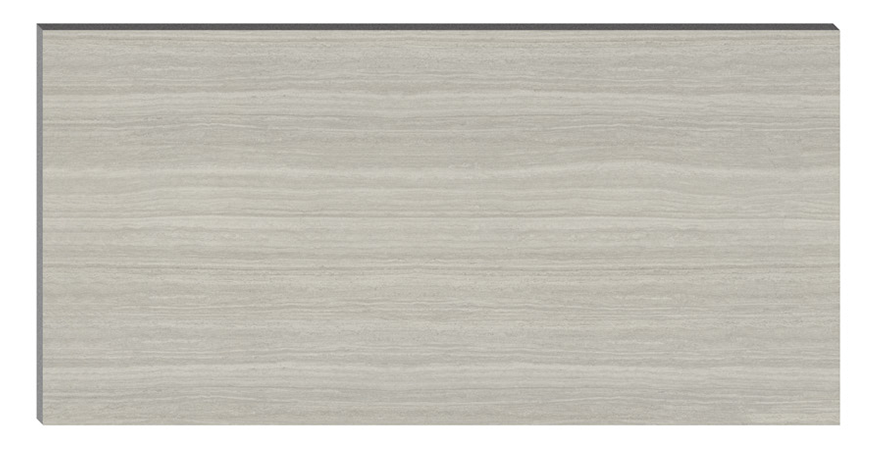|
In the realm of architecture and exterior design, stone exterior tile wall cladding has long been a symbol of elegance, durability, and connection to nature. This classic and timeless choice continues to be a favorite among architects, designers, and homeowners alike.

I. Types of Stone Used for Exterior Wall Cladding
1.Granite
Granite is one of the most popular stones for exterior wall cladding. It is an igneous rock known for its extreme hardness and durability. Its dense composition makes it highly resistant to weathering, including the effects of rain, snow, and strong winds. Granite comes in a wide range of colors, from the classic black and gray to more vibrant shades like pink and blue - gray. Its natural speckles and patterns add a unique and luxurious touch to any building facade.
2.Marble
Marble, with its smooth texture and beautiful veining, is another premium option for exterior wall cladding. Although it is not as hard as granite, proper treatment and installation can make it suitable for exterior use. Marble exudes an air of sophistication and luxury. It is often used in high - end residential and commercial buildings to create a statement - making entrance or facade. The natural variations in its veining patterns ensure that each installation is truly one - of - a - kind.
3.Limestone
Limestone offers a more rustic and earthy aesthetic. It is a sedimentary rock that has been used in construction for centuries. Limestone's soft color palette, which includes shades of beige, cream, and light gray, blends well with natural surroundings. It is relatively easy to work with, allowing for various finishes such as smooth, tumbled, or rough - cut. This versatility makes it a great choice for both traditional and contemporary architectural styles.
4.Slate
Slate is a fine - grained metamorphic rock with a distinctive split - face texture. It is highly resistant to water and has excellent weather - proofing properties. Slate comes in colors like black, gray, and green. Its non - slip surface makes it a practical choice for areas where safety is a concern, such as walkways and entrances. When used for exterior wall cladding, slate can give a building a unique and textured look.
II. Aesthetic Appeal
1.Connection to Nature
Stone exterior tile wall cladding brings the beauty of nature directly to the building. The natural colors, patterns, and textures of the stones create a harmonious and organic look. Whether it's a mountain - side cabin clad in local stone or a modern urban building with a sleek marble facade, the use of stone makes the structure blend in with its environment or stand out as a work of art inspired by nature.
2.Timeless Elegance
Stone has an inherent elegance that never goes out of style. Unlike some trendy materials that may fade in popularity over time, stone - clad buildings maintain their charm and sophistication for decades, even centuries. The classic look of a granite - faced building or a limestone - trimmed mansion exudes a sense of permanence and quality.
III. Practical Benefits
1.Durability
As mentioned earlier, most stones used for exterior wall cladding are extremely durable. They can withstand the test of time and the harshest of weather conditions. Granite, for example, can last for hundreds of years with minimal maintenance. This durability not only saves on replacement costs but also ensures that the building's exterior remains in good condition for a long time.
2.Low Maintenance
Stone exterior tile wall cladding generally requires very little maintenance. Regular cleaning with water and a mild detergent is usually sufficient to keep it looking its best. Some stones may need an occasional sealing to protect against stains and water penetration, but this is a relatively simple and infrequent task.
3.Energy Efficiency
Stone has natural insulating properties. A well - installed stone exterior can help regulate the temperature inside the building. It can keep the interior cool in summer and warm in winter, reducing the need for excessive heating and cooling. This not only saves energy but also lowers utility bills.
4.Increased Property Value
Buildings with stone exterior tile wall cladding often have a higher resale value. The quality and aesthetic appeal of stone make it an attractive feature for potential buyers. Whether it's a residential home or a commercial property, the addition of stone cladding can significantly enhance the property's marketability.
IV. Installation Considerations
1.Surface Preparation
The success of stone exterior tile wall cladding installation depends on proper surface preparation. The wall surface must be clean, dry, and free of any debris or loose materials. It may need to be primed or treated with a bonding agent to ensure a strong adhesion between the stone and the wall.
2.Weight and Structural Support
Stone is a heavy material, so it's crucial to ensure that the building's structure can support the weight of the cladding. In some cases, additional structural support may be required, especially for large - scale installations. Professional engineers should be consulted to assess the structural integrity before installation.
3.Sealing and Waterproofing
To prevent water penetration and staining, stone exterior tile wall cladding should be properly sealed. This is especially important for areas that are exposed to rain or high humidity. Using high - quality sealants and following the manufacturer's instructions for application is essential.
In conclusion, stone exterior tile wall cladding offers a combination of aesthetic beauty, practical functionality, and long - term durability. It is a choice that can enhance the value and appeal of any building, making it a worthwhile investment for both new construction and renovation projects.
|